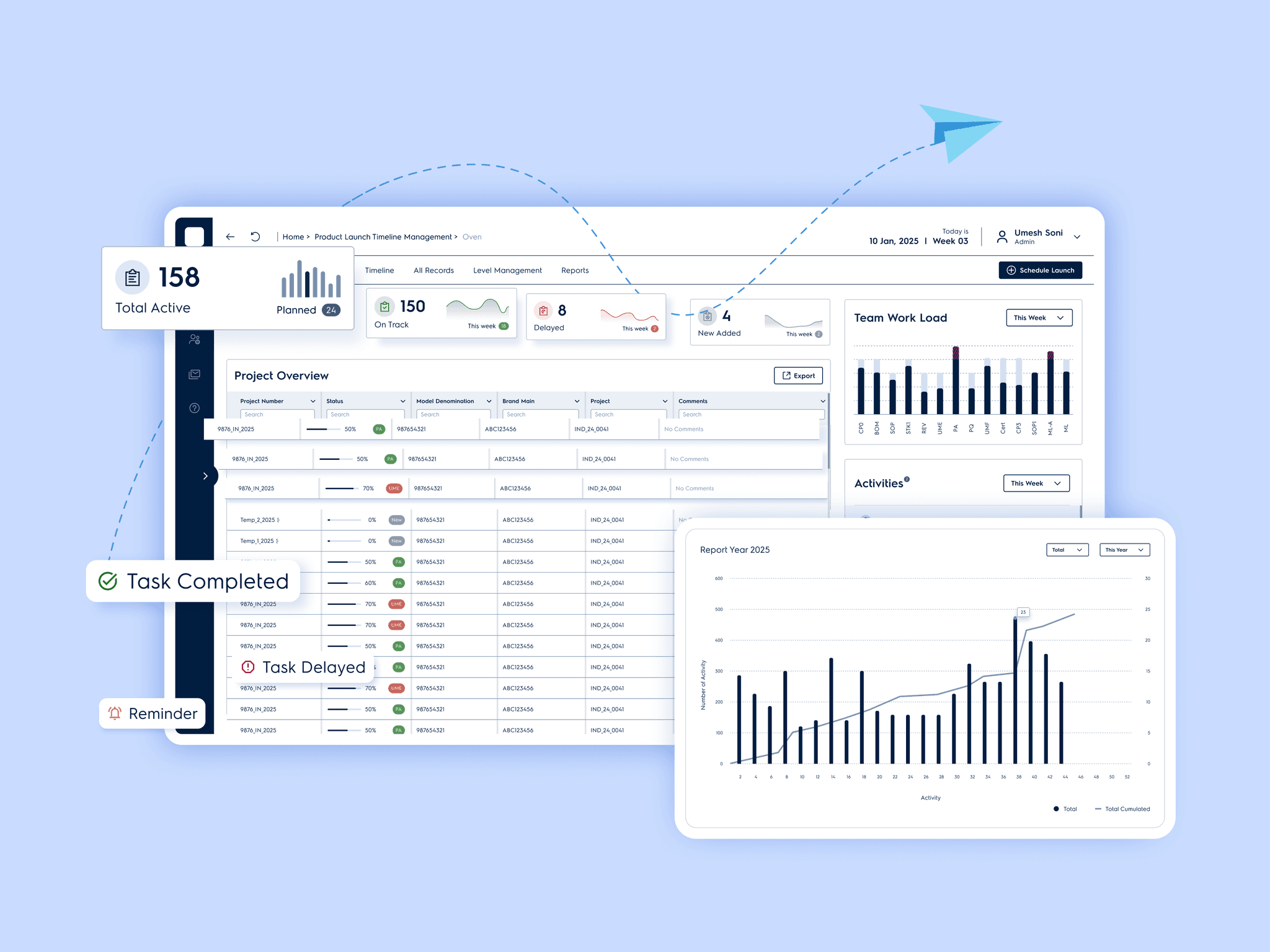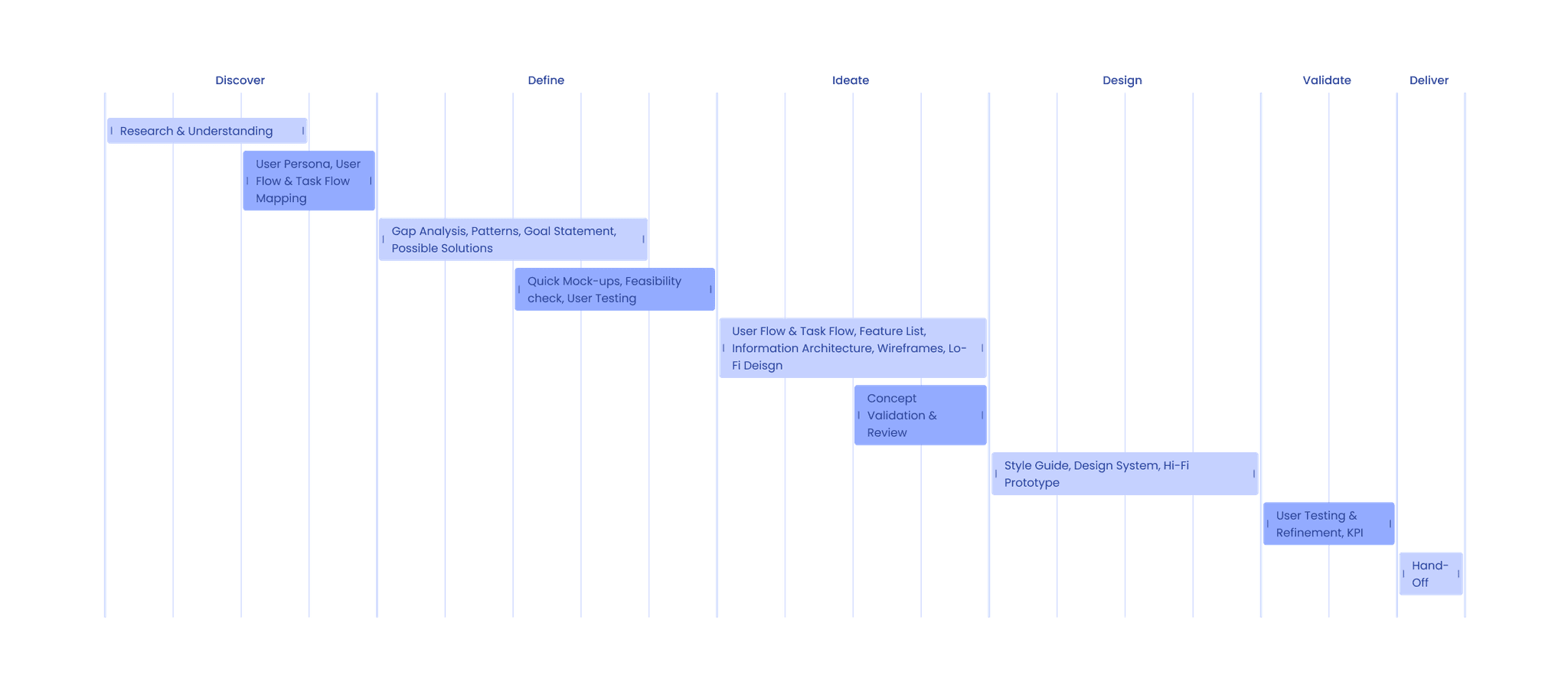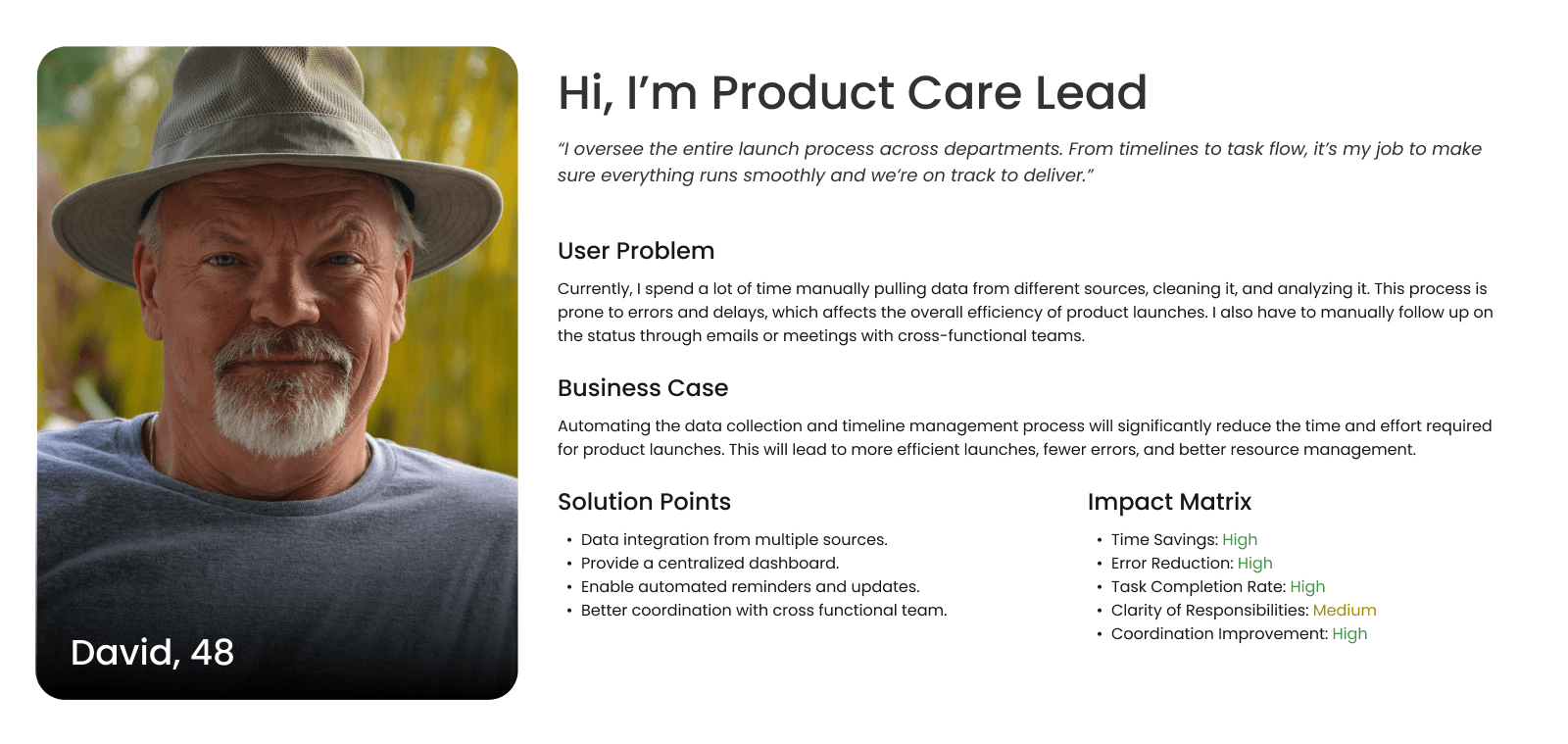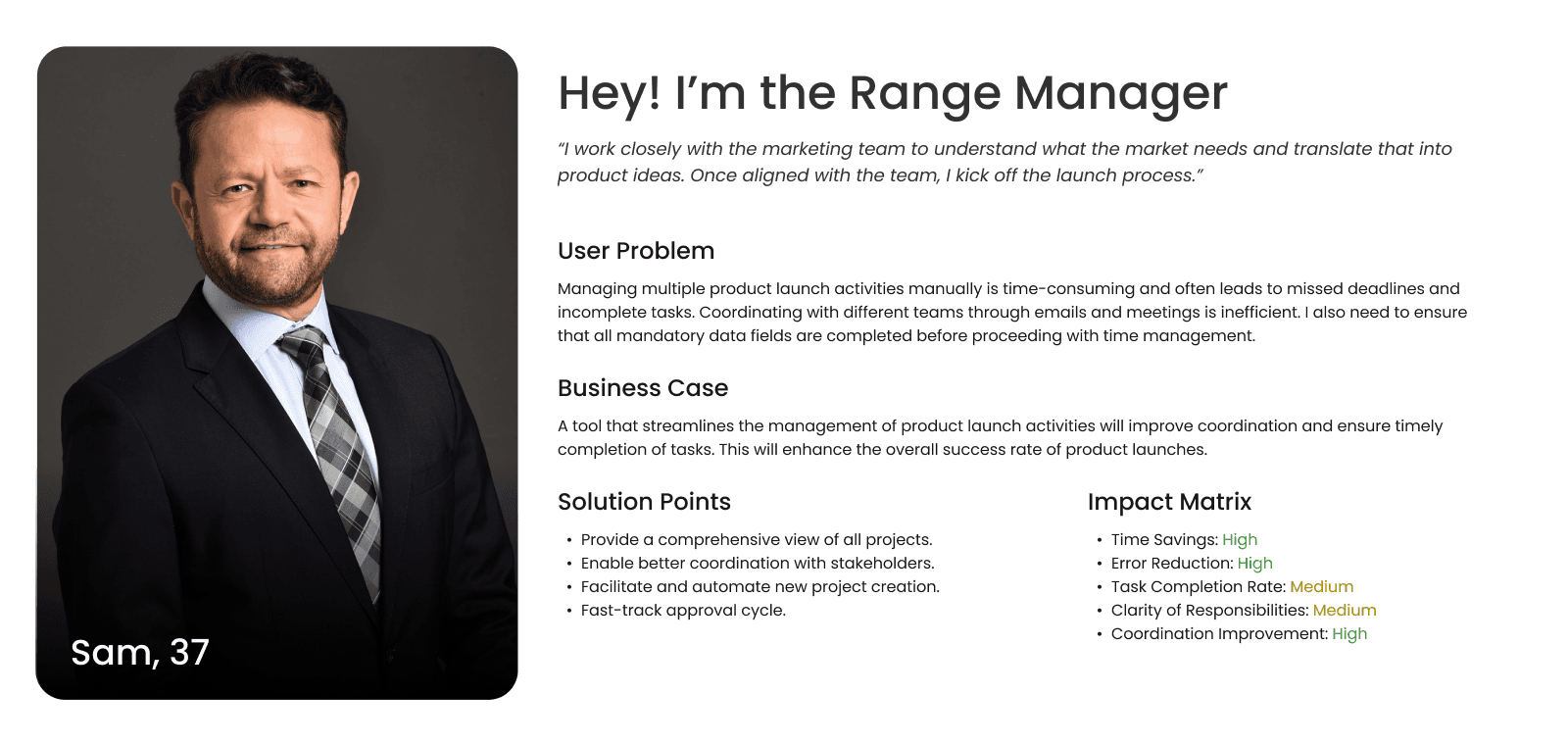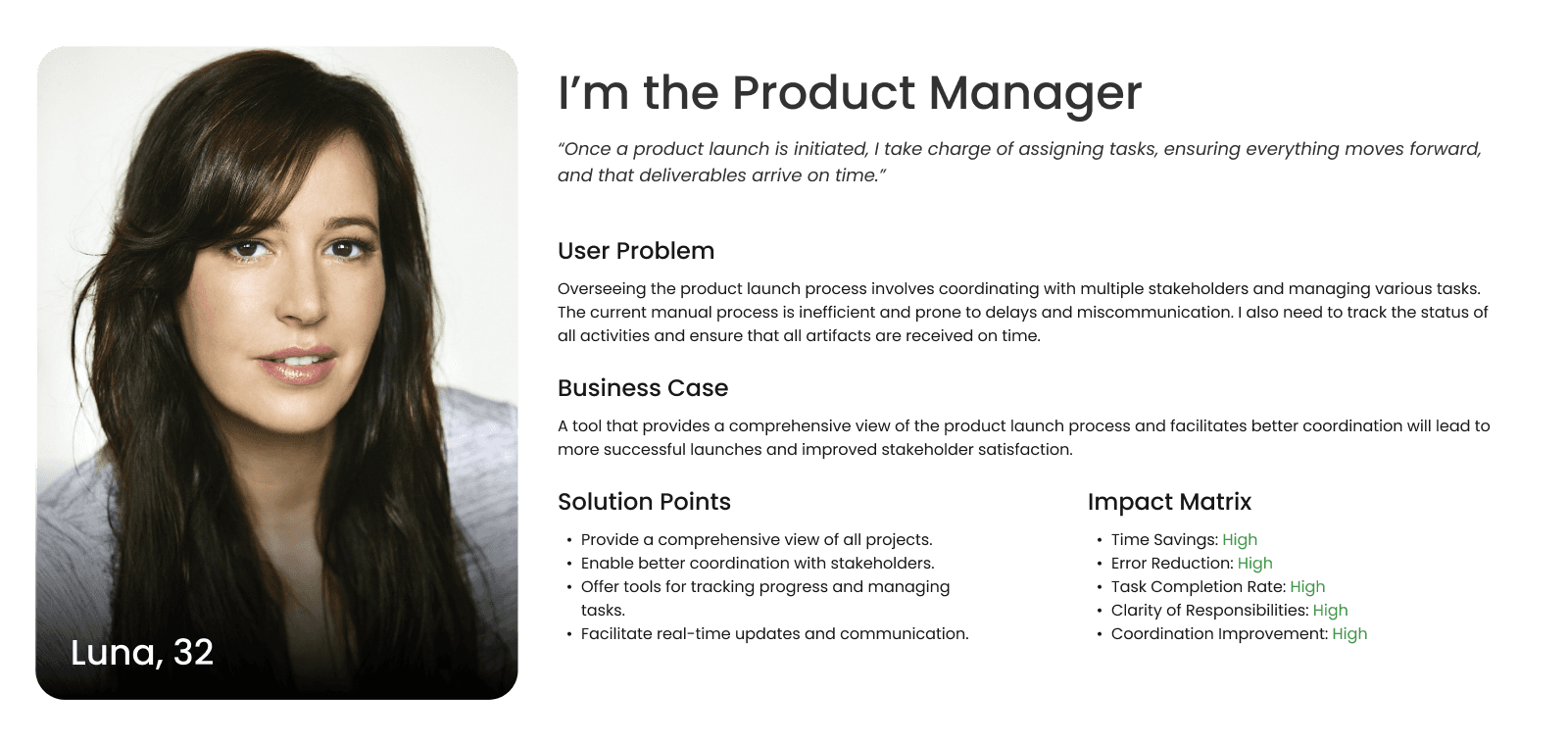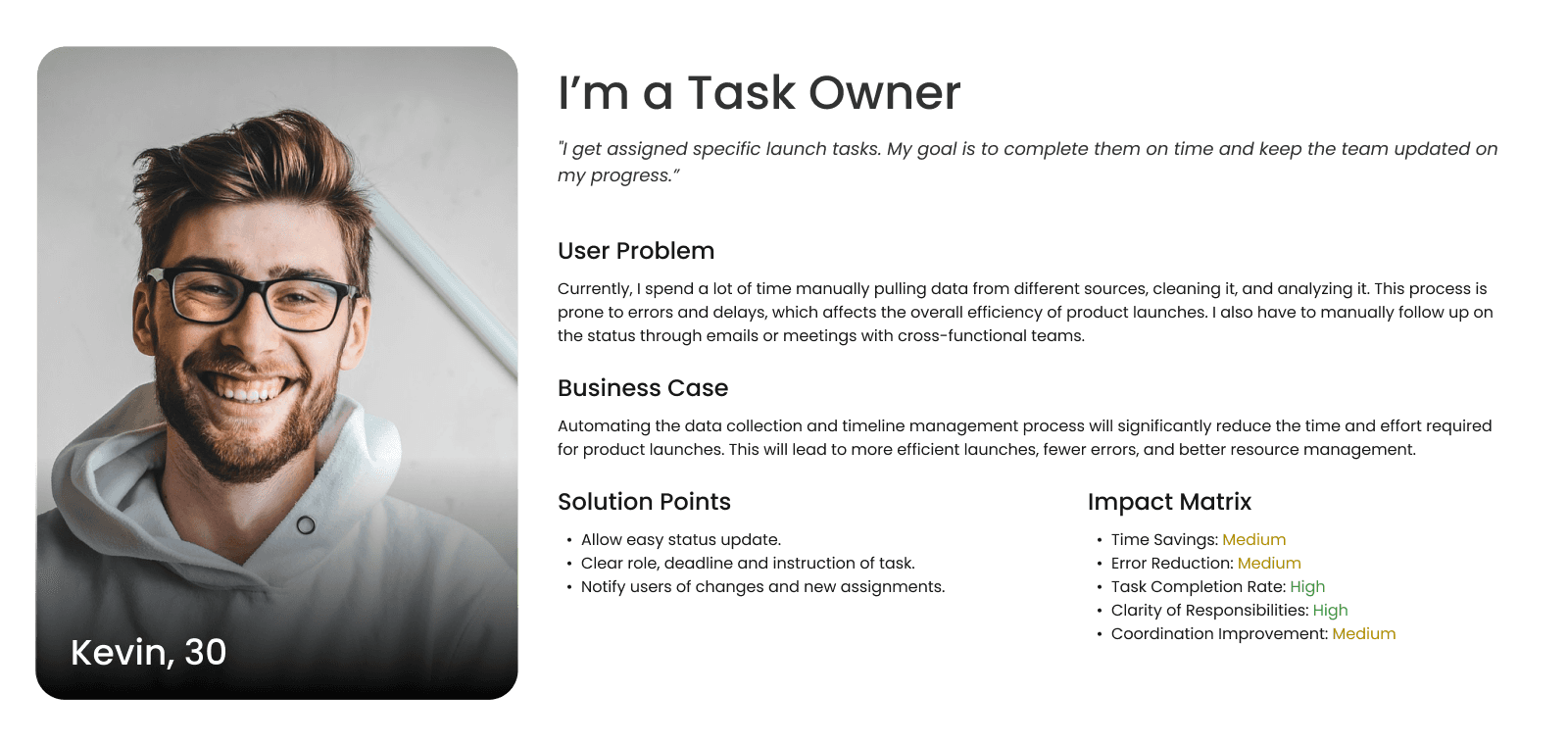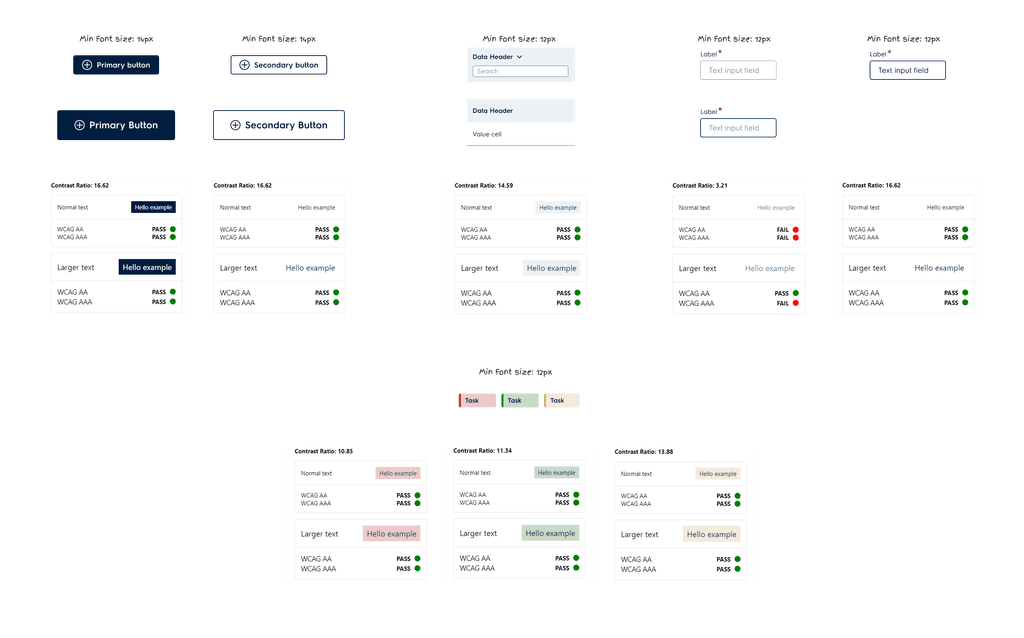Key Issues
Manual Workflows
Data had to be gathered and cleaned from multiple sources, leading to delays and errors.
Lack of Central Visibility
Progress and responsibilities weren’t tracked on a single platform.
Poor Coordination
Relying on emails and spreadsheets caused misalignment and missed deadlines.
Solution Points
Reduced Manual Overhead
Automation replaced repetitive tasks so teams could focus on strategic launch work.
Centralized Visibility
One dashboard gave instant clarity on progress, ownership, and timeline
Clear Roles & Accountability
Role-based tasks ensured ownership and reduced miscommunication.
Error Prevention
Checks and validations minimized mistakes and avoided costly delays.
Efficiency & Savings
Streamlined workflows cut rework, saving both time and money.
Create New Project → “Before Design Intervention”
Create New Project → “Optimized Flow”
Update Timeline → “Before Design Intervention”
Update Timeline → “Optimized Flow”
Stakeholders appreciated the dashboard but suggested deeper filtering options for timeline views.
Instead of just showing delayed or on Track, can we also show which stage the task got stuck at?
In same timeline row can we show the comparision of last and latest timeline?
Can we also have a tab for level management to create level presets?


Collaboration is everything – Working closely with stakeholders, end users, and developers helped align design with real needs.
Simplicity is powerful – Turning a complex, scattered workflow into a streamlined tool proved that good UX can untangle anything.
Design-Dev handoff matters – Guided developers on Figma’s developer mode, making implementation smoother and more efficient.
Empathy leads to impact – Observing how users interacted with the old process helped design a solution that truly fit their workflow.
Scalability starts early – Building a robust design system laid the groundwork for future feature expansion.
